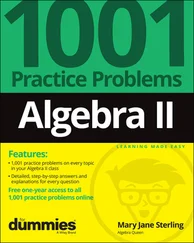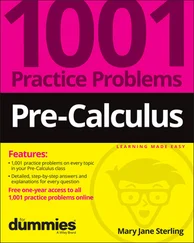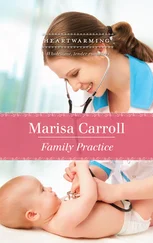2 discusses the use of specific intake interview questions and appropriate functional assessments to assess low-, moderate-, and high-risk clients;
3 illustrates how risk and resiliency factors occur on a continuum during pandemic viruses using the PRRC theoretical model;
4 differentiates mental, behavioral, and psychosocial symptoms that are healthy-normal and unhealthy-abnormal as they relate to a pandemic virus;
5 appraises salient features of the assessment, diagnosis, and treatment of mental health conditions that interfere with daily functioning in multiple life areas;
6 explores the grief, loss, and psychosocial experiences associated with pandemic viruses;
7 describes the various phases and stages of pandemic viruses that should be anticipated for the application of prevention and treatment approaches;
8 illustrates specific adjustment and adaptation stages of a pandemic virus and how they impact mental, behavioral, and psychosocial functioning;
9 delineates through the phases of pandemic rehabilitation model the essential tasks of navigating and transitioning through critical stages of a pandemic virus;
10 identifies coping and resiliency resources for persons that can serve as a means of prevention and treatment of mental, behavioral, and psychosocial symptoms during phases of a pandemic virus; and
11 discusses how to recognize and prevent the symptoms of empathy fatigue so professionals can function optimally and provide services to those in need during a pandemic disaster.
Overall, Counseling Practice During Phases of a Pandemic Virus provides a new paradigm for professionals dealing with the mental, behavioral, and psychosocial health of individuals, groups, communities, and cultures. The material presented is based on the opinions of subject matter experts; extensive research in disaster mental health counseling; theories of trauma-informed counseling; and clinical applications in the fields of counseling, psychology, traumatology, epidemiology, behavioral health, and public health sciences. 2
1 1 At the time of this writing in April 2021, the COVID Generation does not have a unified definition and has relational meaning in the literature primarily to children and adolescents.
2 2 The Centers for Disease Control and Prevention’s (CDC) guidelines for COVID-19 have been dynamic during 2020–2021 as they have offered interim guidance to healthcare professionals, businesses, educational systems, and the general public. Guidance on appropriate virus hygiene protocols such as use of masks in public schools and other settings reflects the current state of epidemiological concerns of COVID-19 infections, disease transmission, geographic hot-spots of variants, and mortality. Thus, the CDC guidelines for good virus hygiene have been adapted by some states, institutions, and organizations but dismissed by others based on their unique circumstances. Readers should consult the latest federal, state, and local health institutional guidelines for appropriate virus hygiene and disease containment issues in their area of the country.
Chapter 1 Theoretical Aspects of Risk and Resiliency During a Pandemic Virus
The purpose of this chapter is to discuss, analyze, recognize, and illustrate risk and resiliency factors that are of clinical significance in individuals seeking mental health and allied helping services during a pandemic virus. My theoretical model, called the pandemic risk and resiliency continuum (PRRC) model, is illustrated in Chapter 2. It offers a unique perspective, with two separate models: resiliency (excellent to poor resiliency) and risk (low to extreme risk), each assessed on a 5-point scale. The models of resiliency and risk each comprise four major categories of characteristics and traits: (a) mental health, (b) behavioral health, (c) psychosocial health, and (d) medical/physical health. The foundations for good mental, behavioral, and psychosocial health are explored in this chapter. The focus is on individual resiliency and risk factors observed during phases of a pandemic disaster. The intention is to enable helping professionals to anticipate, prepare for, and prevent adverse mental, behavioral, psychosocial, and health reactions.
Research generally suggests that during other natural disasters 30–50% of individuals will acquire adverse medical, physical, and psychological conditions. Short- and long-term consequences can negatively impact individuals’ overall medical, physical, and mental health and well-being. Reconceptualizing disaster mental health models and applying the results to phases of a pandemic virus will assist practitioners in appraising risk and resiliency during a pandemic virus. Ultimately, clinical researchers and practitioners may want to develop pandemic disaster prevention and intervention approaches with the intention of decreasing the mental, behavioral, and psychosocial risk factors that predispose individuals to depression, anxiety, substance use, and posttraumatic stress disorders.
The PRRC is based on extensive research in disaster mental health response; theories of trauma-informed counseling; and clinical therapeutic applications in the fields of counseling, psychology, traumatology, grief, death, and dying, which is generally reflected throughout this work (e.g., Baker & Cormier, 2015; Biddlestone et al., 2020; Boss, 2006; Dong & Bouey, 2020; Echterling et al., 2005; Fiorillo & Gorwood, 2020; Garfield, 1979; Germani et al., 2020; Lopez Levers, 2012; Manderscheid, 2007; J. E. Miller et al., 2020; Morganstein & Ursano, 2020; Muratori & Haynes, 2020; National Center for Health Statistics, 2020; Ornell et al., 2020; Pappas et al., 2009; Razai et al., 2020; Reyes et al., 2013; Shigemura et al., 2020; Shultz et al., 2016; Steardo et al., 2020; Stebnicki, 2000, 2005, 2007, 2008b, 2016a, 2017, 2018b; Stebnicki & Marini, 2016; Updegraff & Taylor, 2000; Wind et al., 2020; Worden, 2009). Additional considerations have been given to a variety of clinical observations, documented case studies, personal testimonials, and experiences of disaster and trauma survivors. Overall, the theories expressed by the PRRC theoretical model are delineated throughout the chapters of Counseling Practice During Phases of a Pandemic Virus .
Shortcomings in Theories of Pandemic Disaster Mental Health Response
Natural disasters (e.g., floods, hurricanes, tornadoes, wildfires, earthquakes), person-made disasters (e.g., school shootings, terrorist attacks, workplace violence), and technological/biological disasters (e.g., cyberattacks, toxic chemical spills, nuclear and industrial accidents) have distinct psychological stressors and clinical characteristics. Similarly, pandemic disasters have unique characteristics of their own that hinder mental, behavioral, and psychosocial functioning. Each type of disaster has its own separate theories, constructs, and strategies that underlie the mental health response that are typically attributed and generalized to individuals, groups, communities, and world cultures (American Counseling Association, 2020; Baker & Cormier, 2015; Echterling et al., 2005; Lopez Levers, 2012; Stebnicki, 2000, 2005, 2007, 2008b, 2016a, 2017; Substance Abuse and Mental Health Services Administration, 2020c).
However, few studies address the mental, behavioral, and psychosocial health concerns of pandemic viruses such as the novel coronavirus (COVID-19). During the past 30 years, the extensive research on disaster mental and behavioral health has focused largely on natural and person-made disasters (Boss, 2006; Lopez Levers, 2012; Muratori & Haynes, 2020; National Organization for Victim Assistance, 2020; Schneider Corey & Corey, 2021; Stebnicki, 2016c, 2017; Van Der Kolk, 2014). For example, in the United States, studies of pandemic viruses have primarily centered on AIDS and HIV, which were first reported in 1981. There are four decades of research related to the HIV/AIDS epidemic and pandemic. Thus, there are a considerable amount of research related to the medical, physical, psychosocial, and behavioral aspects of these infectious diseases (Eaton & Kalichman, 2020). By 2006, the HIV/AIDS pandemic had resulted in an estimated 65 million infections and 25 million deaths worldwide (Centers for Disease Control and Prevention [CDC], 2006). The estimated number of positive cases of HIV/AIDS in 2018 had been reduced to approximately 38 million worldwide (UNAIDS, 2019). Thus, professional education, training, and HIV/AIDS prevention and intervention programs have demonstrated effectiveness in reducing the incidence and prevalence of this pandemic. However, the same is not true for the COVID-19 pandemic disaster, as health care providers and the public health infrastructure are overwhelmed. In addition, there has been a significant increase in the number of Americans experiencing depression, anxiety, substance use, and posttraumatic stress disorders.
Читать дальше












